Museum of Modern Art (MoMA)
Introduction
Text-to-speech Audio
Images
The Museum of Modern Art in 1939, shortly after moving to the location it still occupies.
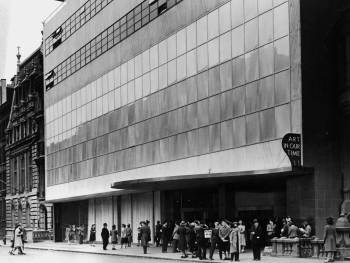
MoMA today.
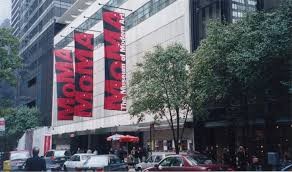

Claude Monet, Reflections of Clouds on the Water-Lily Pond, c.1920. This piece was bought to replace another Monet water lilies painting destroyed in the 1958 fire.
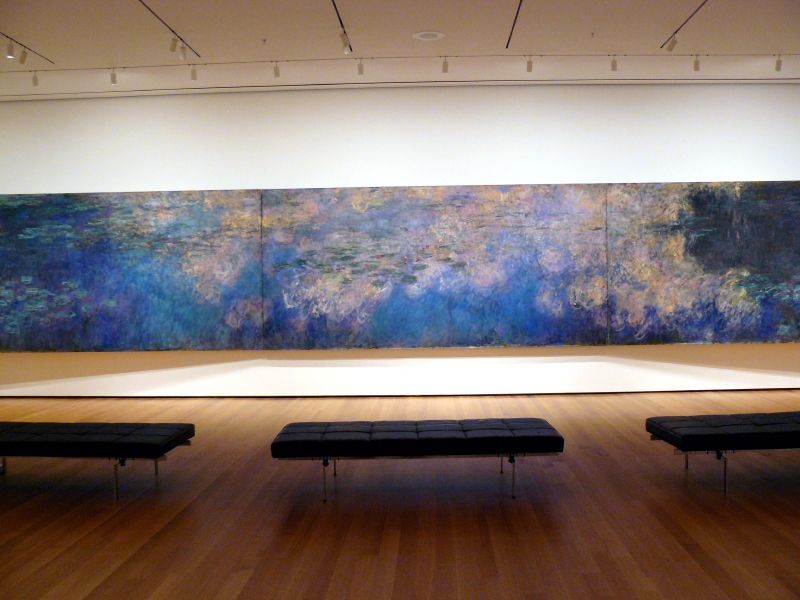
Vincent van Gogh, The Starry Night, 1889.
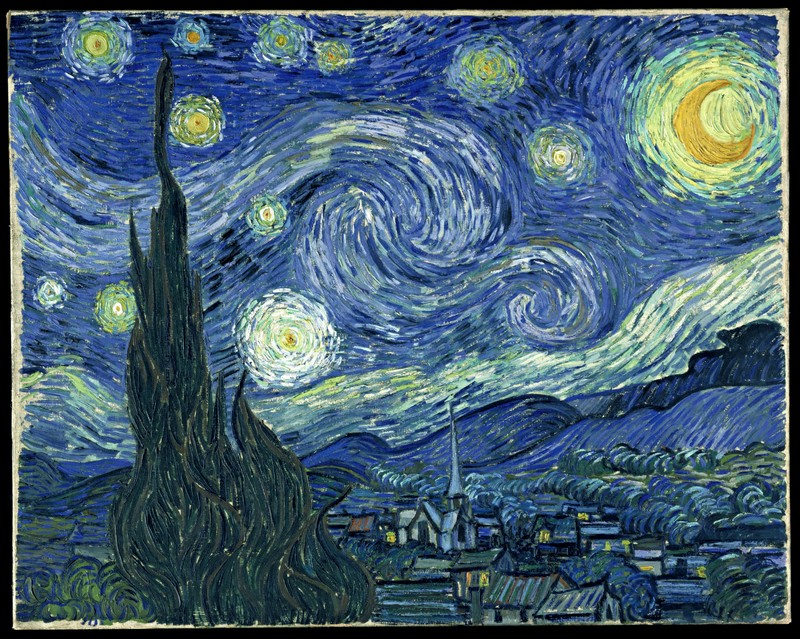
Henri Matisse, View of Notre-Dame, 1914.
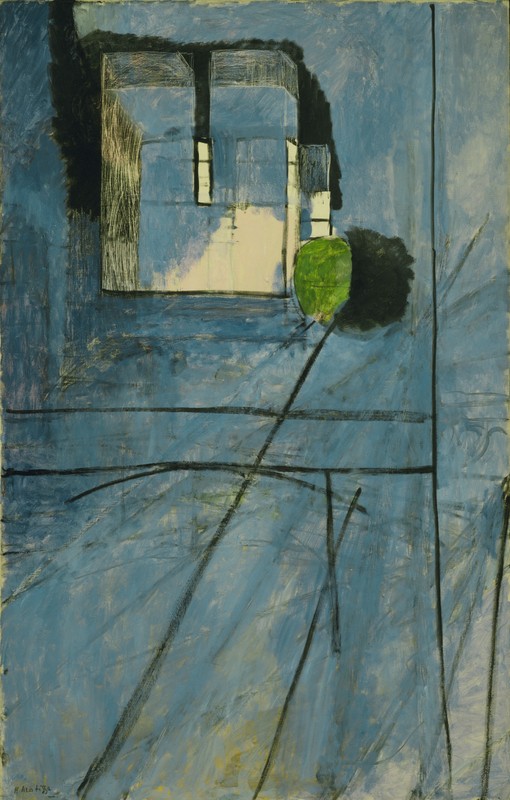
Giorgio De Chirico, Love Song, 1914.
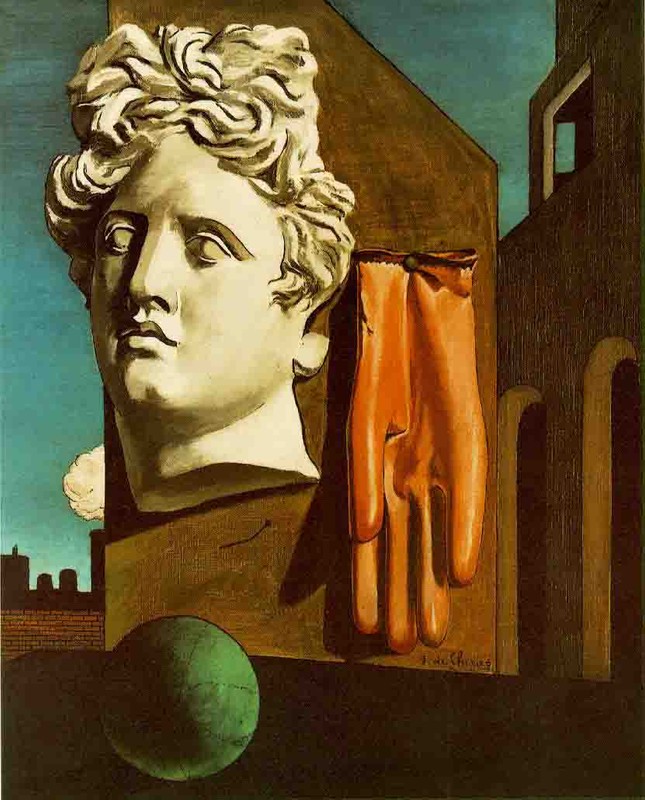
Backstory and Context
Text-to-speech Audio
The idea for a modern art museum in New York was first developed by a group of philanthropists, educators, and museum curators including Abby Aldrich Rockefeller (wife of John D. Rockefeller), Lillie P. Bliss and Mary Quinn Sullivan, known in social circles as “the daring ladies”. This group of women envisioned a small museum with the primary purpose to educate the public on Modern art. In pursuit of this, they established a foundation to raise funds for a museum and in 1929, the Museum of Modern Art was officially created. The museum’s first location consisted of six gallery rooms on the 12th floor in midtown Manhattan's Heckscher building. The 1929 inaugural exhibition consisted of several paintings – all on loan – by the European Post-Impressionists van Gogh, Seurat, Gauguin, and Cézanne. MoMA’s popularity was immediate, and the museum moved into larger and larger spaces until, a decade later in 1939, the museum moved into a rented space in its current location on West 53rd Street, Midtown Manhattan.
In the new space, the first MoMA exhibition – a Picasso retrospective – helped established the museum as a preeminent force in the modern art world. In 1941, a similarly revolutionary exhibition of Native American art helped shift the paradigm of displaying non-western art. Tragedy struck MoMA in 1958. Workers installing air conditioning inadvertently caused a fire while smoking. As a result of the conflagration, one worker died, several people were treated for injuries and smoke inhalation, and an eighteen-foot painting of water lilies by Monet was destroyed. Despite the incident, MoMA continued to grow in popularity, and more space was soon needed. Abby Rockefeller’s son, David Rockefeller, commissioned architect Philip Johnson to design a new garden for the site. The Abby Aldrich Rockefeller Sculpture Garden was completed in the late 1950s, and Johnson was retained to oversee renovations throughout the 1960s.
From 1983 to 1984, MoMA again expanded. Cesar Pelli was hired to design several new structures and spaces for the museum. A residential skyscraper known as the Museum Tower was built adjacent to the museum as a source of revenue for MoMA. The bottom floors of this building were used as additional gallery space. A new wing, auditorium, two restaurants, and a bookstore were also added to MoMA. Another major expansion project began in 1997 under the auspices of Yoshio Taniguchi and Kohn Pederson Fox. The project continued into the 2000s, and the museum closed for two years during the renovation. Despite the sweeping nature of earlier renovations, they pale in comparison to the construction completed from 2015 to 2019. Costing $450 million, 165,000 square feet of additional museum space was added.
The frequency of MoMA’s expansions is fitting when one considers the size and scope of the museum’s collection. MoMA originally planned on establishing no permanent collection, as what art is considered “modern” will always be evolving. Recognizing the significance of many works displayed in the museum however, the permanent collection was created in 1952. Considered to have one of the best collections of modern Western masterpieces in the world, MoMA's holdings include more than 200,000 individual pieces. The museum also owns over 22,000 films, videos, and media works, as well as film stills, scripts, posters and historical documents. The collection houses important and familiar works from artists such as Pablo Picasso, Salvador Dalí, René Magritte, Paul Cézanne, Henri Matisse, Vincent van Gogh, Andy Warhol, and many more.
MoMA remains committed to the reason behind its founding: education. The museum’s online database has digitized more than 83,000 works – almost half of the total collection. A variety of pedagogical courses and workshops are offered to K-12 educators. In conjunction, the Mellon-Marron Research Consortium provides mentorship and scholarship creation opportunities to higher education students. The Cisneros Institute, Celeste Bartos Film Preservation Center, and study centers all promote the visibility and accessibility of art and art education. The MoMA library serves as a complement to its many other education resources and houses over 300,000 volumes. MoMA remains a vibrant nexus of education, as much a place of learning as it is a museum.
Sources
Allen, Greg. MoMA On Fire, Greg Allen. September 2nd 2010. Accessed October 21st 2020. https://web.archive.org/web/20140122120634/http://greg.org/archive/2010/09/02/moma_on_fire.html.
Elligott, Michelle. Perspectives from the Museum of Modern Art Archives, New York. International Institute for Archival Science of Trieste and Maribor. 2008. Accessed October 21, 2020. http://www.iias-trieste-maribor.eu/fileadmin/atti/2008/Elligott.pdf.
FitzGerald, Michael C. Making Modernism: Picasso and the Creation of the Market for Twentieth-century Art. Berkeley, CA. University of California Press, 1996.
Franklin, Sydney. MoMA reopens with a $450 million mega-expansion and slick renovation, The Architect's Newspaper. October 16th 2019. Accessed October 21st 2020. https://www.archpaper.com/2019/10/moma-reopens/.
Grunenberg, Christoph. The Modern Art Museum. Michigan State University. Accessed October 21, 2020. https://msu.edu/course/ha/240/modernartmuseum.pdf
Hines, Morgan. 'A new MoMA:' New York's Museum of Modern Art reopening after $450 million expansion, USA Today. October 16th 2019. Accessed October 21st 2020. https://www.usatoday.com/story/travel/2019/10/16/moma-reopens-museum-modern-art-new-york-opens-oct-21/3983343002/.
Meecham, Pam. Sheldon, Julie. Modern Art: A Critical Introduction. Psychology Press, 2000.
Message, Kylie. The Shock of the Re-newed Modern: MoMA 2004. University of Leicester. 2006. Accessed 4/30/17. https://www2.le.ac.uk/departments/museumstudies/museumsociety/documents/volumes/3message.pdf.
Museum of Modern Art, The Art Story. Accessed October 21st 2020. https://www.theartstory.org/venue/museum-of-modern-art/history-and-importance/#nav.
Museum of Modern Art Gallery Expansion and Residential Tower, Pelli Clarke Pelli Architects. Accessed October 21st 2020. https://pcparch.com/project/museum-of-modern-art-gallery-expansion-and-residential-tower/.
The Museum of Modern Art History, MoMA. Accessed October 21st 2020. https://www.moma.org/about/who-we-are/moma-history.
Updike, John. Invisible Cathedral, The New Yorker. November 8th 2004. Accessed October 21st 2020. https://www.newyorker.com/magazine/2004/11/15/invisible-cathedral.
The Art Story. Accessed October 21, 2020. Museum of Modern Art, The Art Story. Accessed October 21st 2020. https://www.theartstory.org/venue/museum-of-modern-art/history-and-importance/#nav.
Trish. "Reflections of Clouds on the Water-Lily Pond." 2009. Wikimedia. Accessed October 21, 2020. https://commons.wikimedia.org/wiki/File:WLA_moma_Reflections_of_Clouds_on_the_Water-Lily_Pond_Monet.jpg.
